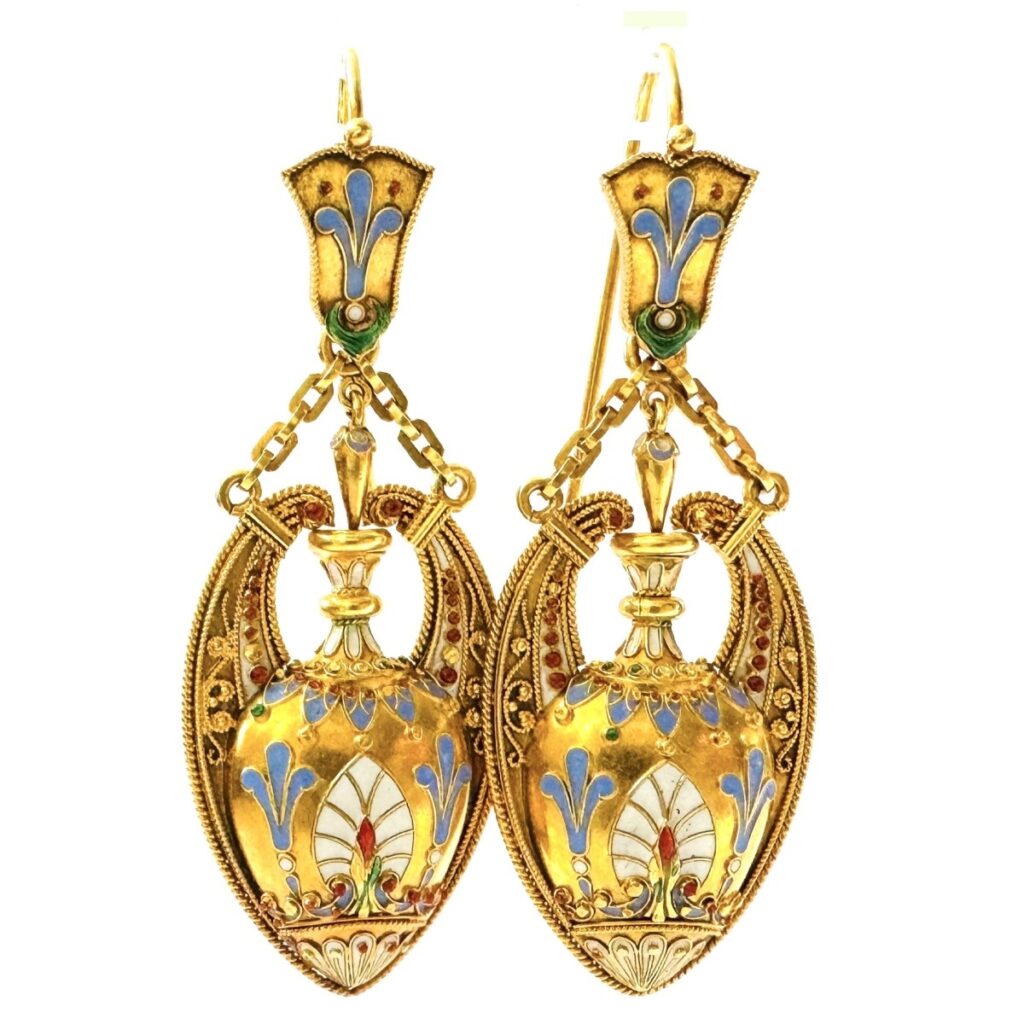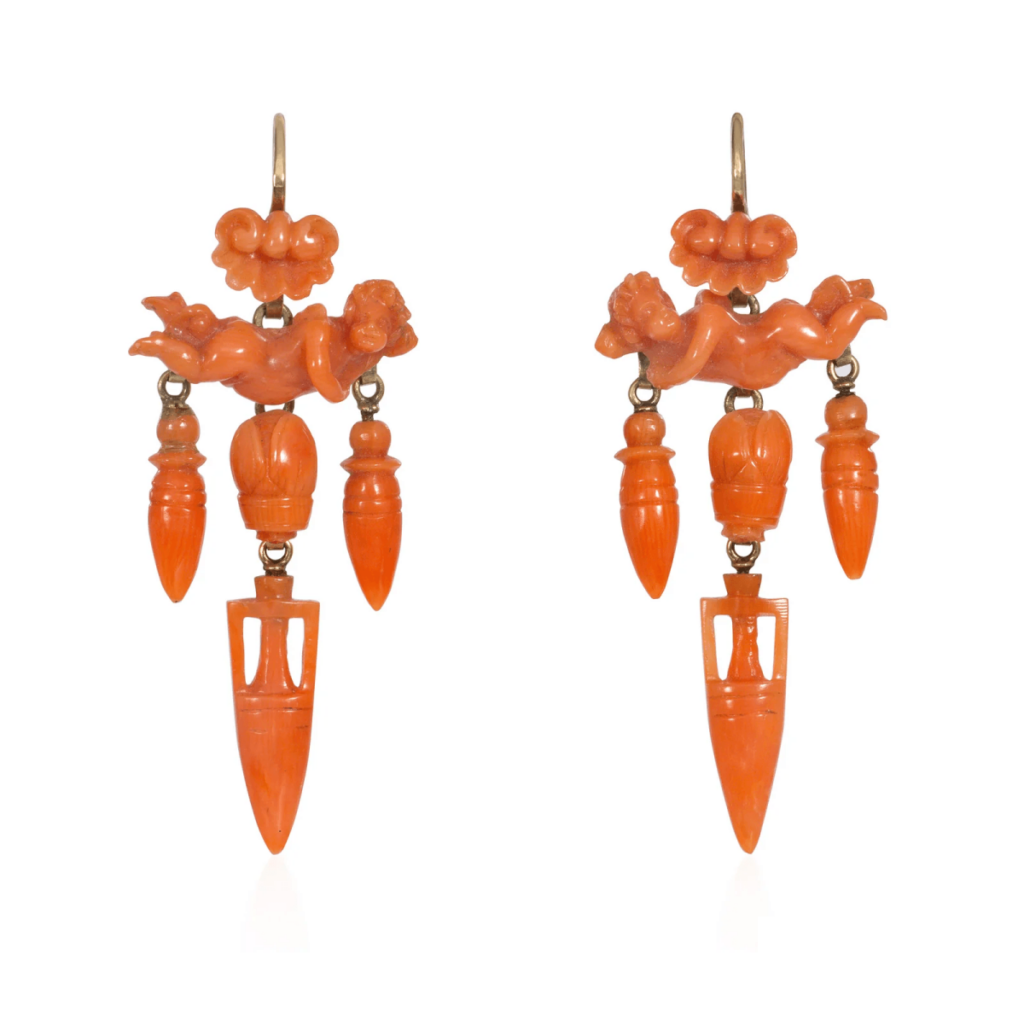Framing the face with light, earrings are one of the most flattering types of jewelry that you can wear. Although they come from a different era, antique and vintage earrings have a variety of styles that look just as good today as when they were first in fashion. You may also notice that some of the forms seem familiar as the silhouettes of these antique earrings have morphed into the more modern shapes that we are acquainted with today. Here are three vintage earring styles that were popular during another era, but still look fabulous today.
Dormeuse Earrings

Dormeuse earrings look like they could have been designed in recent years, but in reality, they were created during the Victorian era. These sweet earrings were not only decorative, but they were functional as well. The style was a single diamond, two diamonds, or a cluster suspended from a leverback hook. The earrings were quite small and were meant to be worn while sleeping to keep pierced ear holes from closing. Why were earrings worn to sleep? During the mid 1800s, hair styles were quite severe with a simple part down the middle and a bun in the back with hair dropping over and covering the ears. As a result, earrings were not generally worn during the day (although some women did wear dormeuse earrings during the day) instead the earrings were worn at night so the ear piercings did not close up. Today, these lovely little earrings are perfect to wear to work, or for a polished look when you’re running errands, or are dressed more casually.
Girandole Earrings
Girandole earrings were the height of fashion during the Georgian era, coming into style in the early 1700s. Named after the girandole candelabra, an elaborate affair dripping with crystal drops, girandole earrings were also very ornate. Hair fashions of the time were upswept and necklines were low, leaving the neck, throat and décolletage open for embellishment. Oversized earrings were the perfect complement. Girandole earrings featured a single gem on the earlobe, which suspended a decorative element such as a bow, knot, cluster, scroll, foliage or other motif. This element, suspended three gems, often pear shaped, with the center being slightly longer than the other two. A big show of wealth and power, girandole earrings were very large and extremely heavy. The earrings weighed so much that the ears alone could not hold them, so complex systems of hair ribbons, or over the ear hooks were developed to hold the earrings in place while relieving some of the discomfort from their heaviness, which often caused the earlobe to elongate. When girandole earrings went out of style, they were frequently taken apart and turned into pendants or smaller earrings, as a result, there are very few of this style of earring available today. A lighter, smaller version of girandole earrings continued into the 1800s, such as the earrings shown here. Check out the portrait at the top of the page to see the grandness of girandole earrings. Today, there are many chandelier earrings that borrow inspiration from the girandole style.
Amphora Earrings

Amphora earrings highlight the ancient urns from Greco-Roman times. Amphora is an ancient urn used to store and transport various goods such as olives, grains, oil and wine. There were two main shapes of amphora, the belly and the neck. The belly urn is a rounded form that reaches the mouth, or top of the urn, in one continuous curve. The neck urn is slender through the body with a tall neck. Both types had handles and were often highly decorated, with some on display in museums. Amphora became popular in jewelry during the Revivalist years of the Victorian era when designers such as Fortunato Pio Castellani and Carlo Giuliano began making jewelry in the archeological revival style, including Etruscan Revival, which was very popular in the mid-1800s. The elongated, graceful shape of the amphora is symbolic of wealth, abundance and fertility, while adding a touch of elegance and refinement to a design. While we see long shapes in earrings today that may resemble the form of amphora, it’s a motif that is connected to the archeological revival jewelry of the Victorian era.
Next time you reach for your favorite earrings, you may notice that they have some elements of earrings from days gone by that feel thoroughly modern today.
Top of Page: Portrait of Therese of Saxe-Hildburghausen wearing girandole earrings (1792-1854) circa 1810, Public Domain, courtesy WikiCommons.
Authored by Amber Michelle

